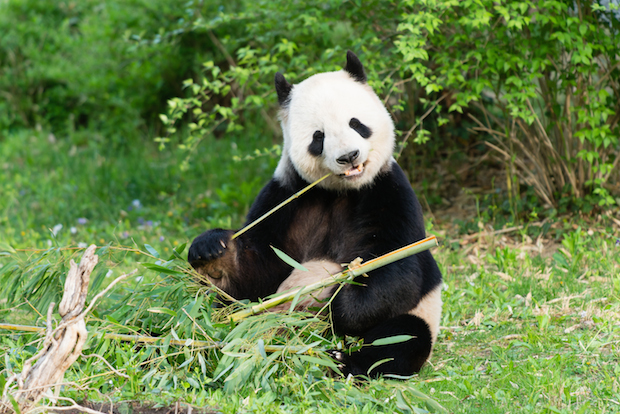National Zoo imports frozen semen for panda breeding
Scientists have returned from China with something they hope will help the breeding chances of a female giant panda at the National Zoo: frozen semen.
Zoo officials hope to use the sperm, from the cryopreservation bank at China's Bifengxia Giant Panda center, to artificially inseminate the zoo's female giant panda Mei Xiang (may-SHONG) when she goes into heat this spring. This is the first time the zoo has brought frozen semen all the way from China for breeding.
The semen was given the first class treatment along the 7,000-mile journey, kept frozen at minus 196 degrees Celsius in liquid nitrogen. After landing at Dulles International Airport, the semen was taken to the Smithsonian Conservation Biology Institute's (SCBI) cryopreservation bank at the National Zoo - all documented on the Zoo's Instagram account.
It was carefully chosen to ensure the breeding would produce a genetically favorable cub. The semen came from Hui Hui (h-WEI h-WEI), who lives at the China Research and Conservation Center for the Giant Panda in Wolong, Sichuan Province. He is nine years old and has not yet sired any cubs.
SCBI's Jon Ballou calculated the best genetic matches for all of the eligible breeding pandas around the world before settling on semen from Hui Hui. Originally developed in the 1990s by Ballou for golden lion tamarins, the mathematical formula is now used to make breeding recommendations for many vulnerable species under population management. A cub sired by Hui Hui would be more genetically valuable than a cub sired by the National Zoo's male Tian Tian.
Zoos around the world have tried a whole range of things to get notoriously finicky pandas to mate. The Chinese have tried panda porn - videos showing pandas mating - and Thai authorities once held a mock wedding to get their pandas in the mood.
But the norm is artificial insemination, a method that has been used for decades in China and more recently in the United States.
The National Zoo's Mei Xiang and Tian Tian have produced two surviving cubs, both through artificial insemination. Tai Shan, their first cub, was born July 9, 2005. He now lives in China. Bao Bao, their second cub, was born Aug. 23, 2013. She will leave the Zoo and travel to China when she turns 4 years old.
Mei Xiang and Tian Tian never have mated naturally, although the zoo had better success with their predecessors Ling Ling and Hsing Hsing. They were at the zoo from the 1970s through the 1990s, producing five cubs, although none of them survived.
The zoo's panda team expects that Mei Xiang will go into estrus for 24 to 72 hours this spring. Research shows that females usually go into estrus 45 to 50 days after they have weaned and separated from their cubs. The panda team slowly simulated the natural weaning process for Mei Xiang and 20-month-old juvenile Bao Bao. They have been living separately since March 1.
The panda is one of the world's rarest animals, with about 1,590 living in the wild in China, mostly in the Sichuan and Shaanxi provinces. The panda's plight has been worsened by the fact they are low breeders - a situation that is even worse in captivity.
The goal of this and other captive breeding programs is to preserve 90 percent of the genetic diversity of the giant pandas for the next 200 years. There are currently 392 giant pandas living in captivity and scientists hope to grow that number to 500.

